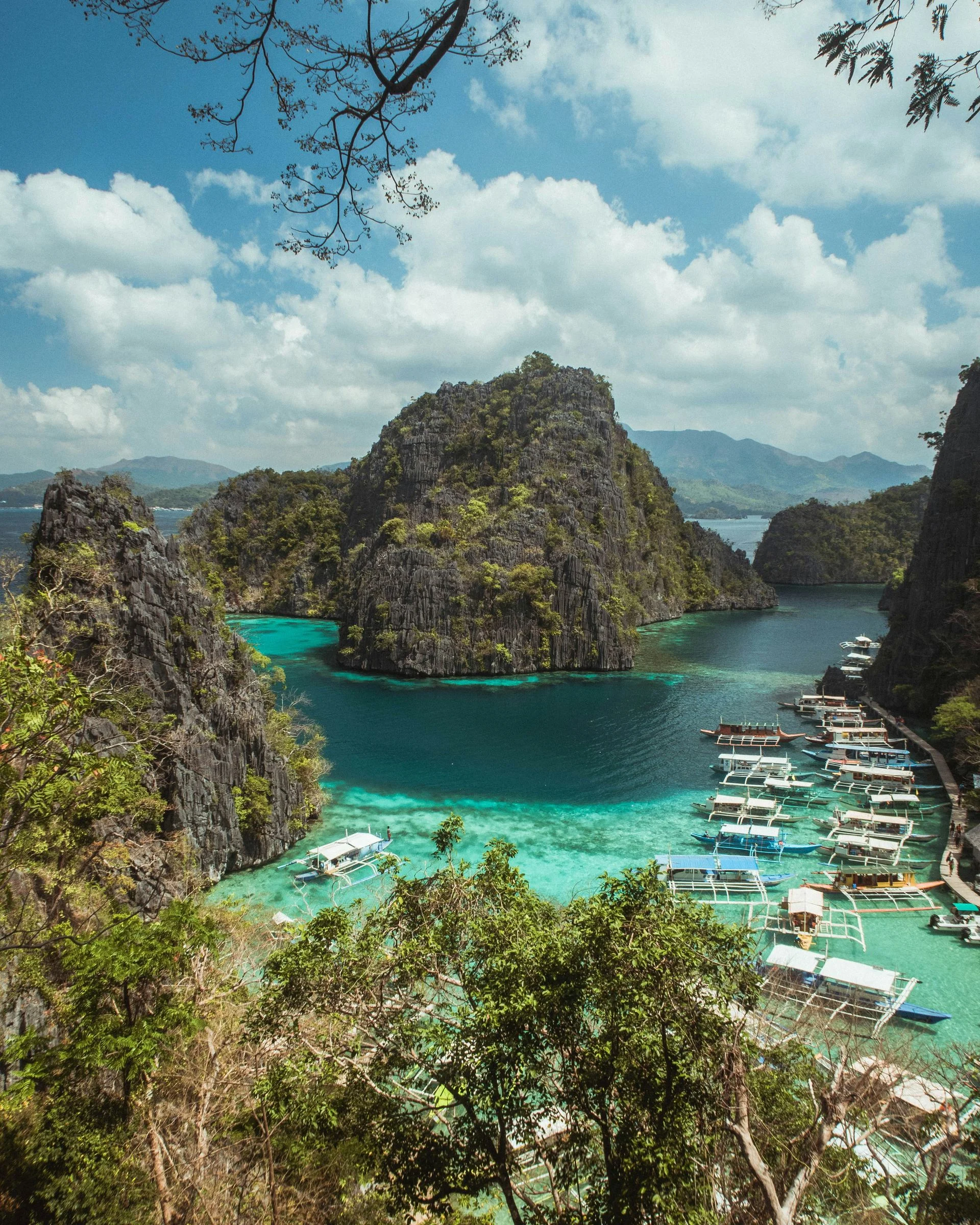Scuba Diving in Coron
The Ultimate Guide
Coron, a mountainous island at the northern end of Palawan, is a world‑renowned destination for World War II wreck diving. On 24 September 1944, US carrier aircraft bombed and sank a Japanese supply fleet anchored in Coron Bay; today more than ten massive shipwrecks lie between 10 and 40 m, encrusted with corals and teeming with life. Divers can swim through cargo holds, engine rooms and anti‑aircraft guns of vessels like Morazan Maru, Akitsushima Maru and Olympia Maru, while schools of glassfish, batfish and macro critters shelter in the shadows. Beyond the wrecks, Coron offers freshwater lake dives like Barracuda Lake – famous for its clear water and thermocline – plus vibrant coral reefs around Sangat and Lusong Gunboat. With dramatic limestone peaks and turquoise lagoons above water, Coron combines history, scenery and adventure in one extraordinary trip.
Difficulty
Moderate
Temperature
28-30°C
Visibility
5-20m

Diving Highlights
Best Months to Dive
Getting to Coron for Diving
✈️Transportation
The easiest route is to fly from Manila or Cebu to Busuanga (USU), also known as Francisco B. Reyes Airport.
From the airport it’s a 45–60‑minute van ride to Coron Town.
Dive centres typically arrange daily boat trips to the wrecks and nearby reefs, and can organise excursions to Barracuda Lake and dugong feeding grounds in northern Busuanga.
Country
Philippines
Currency
Philippine Peso
Electricity
220V, 60Hz, Type A/B plugs
Cost of a Dive Trip in Coron
Day Trip
Dive Resort
Meal
Accommodation
Best Dive Sites in Coron
🐠Morazan Maru
This 367‑ft (111‑m) auxiliary cargo vessel rests upright at about 25 m. Four spacious cargo holds, a boiler room and an air pocket at 20 m give divers plenty to explore. Shoals of silvery fish and curious crabs inhabit the portholes and passageways, and turquoise light filters through the hull, creating a haunting atmosphere.
🐢Akitsushima Maru
The only true warship among Coron’s wrecks, this 118‑m seaplane tender lies on its side at 22–38 m. Divers can see intact anti‑aircraft guns and explore multiple decks and the engine room, which houses four large diesel engines.
🦈Olympia Maru
A 93‑m auxiliary freighter seized by the Japanese, Olympia Maru’s shallowest point is only 12 m, making it ideal for novice wreck divers. The wreck extends to 25 m and has wide openings for easy penetration. Coral growth and schooling fish make this an atmospheric dive.
🐙Irako
This 147‑m refrigeration ship sits between 33 and 42 m and is considered the most challenging wreck in Coron. Narrow entry points, frequent currents and silt mean it’s for experienced divers only. Inside, an engine room, cargo holds and transmission room await exploration.
🐚Barracuda Lake
A crater lake on neighbouring Coron Island reached via a short climb. The top layer of clear freshwater overlays a warm saltwater layer where temperatures can exceed 38 °C. Although there is little marine life, diving among the submerged rock formations and experiencing the drastic thermocline is unique.
🦑Dugong Spot (Busuanga North)
In the seagrass meadows of northern Busuanga, day trips can take divers to feed and swim with dugongs. The trip involves an early morning van ride and boat transfer; sightings are not guaranteed but offer a chance to see these gentle marine mammals.
What Divers Say About Diving in Coron
Alex Thompson
Marine Biologis / DivemasterDiving in Coron feels like stepping back in time. Descending onto the massive hull of a Japanese freighter, you can still see anti‑aircraft guns, boilers and the ship’s name emblazoned in rust. Swimming through cavernous cargo holds lit by shafts of green light while schooling batfish, snappers and jacks swirl around is both eerie and exhilarating. On one dive we popped our heads into the air pocket of Morazan Maru – breathing the stale air of a room sealed since 1944 was surreal! Between wreck dives, we cooled off at Barracuda Lake where an intense thermocline warms you like a bath at depth, then hiked up steep limestone peaks for panoramic views. Coron’s mix of history, haunting wrecks and friendly town vibes made it a highlight of my Philippine dive adventures.
Frequently Asked Questions About Diving in Coron
When is the best time to dive in Coron?
The dry months from March to June offer calmer seas and provides the best visibility on wrecks.
What marine life can I see?
Aside from exploring WWII shipwrecks, expect schools of glassfish, batfish, lionfish, nudibranchs and crabs inside the holds. Dugongs can be seen on special trips to northern Busuanga. Barracuda Lake has little marine life but impressive rock formations and a thermocline.
Is Coron suitable for beginners?
Several shallow wrecks like Lusong Gunboat and Olympia Maru lie between 10–20 m and are suitable for Open Water divers. Deeper wrecks (25–40 m) require Advanced certification and experience. Currents and visibility can be challenging on certain days.
How many dive sites are there?
There are about ten WWII wrecks accessible to recreational divers plus freshwater lakes, reefs and dugong sites. Most dive centres offer three‑dive day trips that visit two wrecks and a reef or lake.
What are the water temperatures and visibility?
Water temperatures are generally 28–30 °C. Visibility ranges from 5–20 m and is best during March–June.